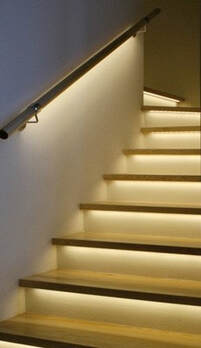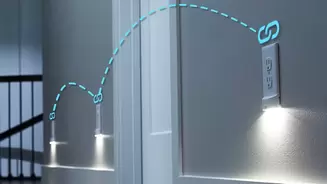CIRCADIAN STIMULUS, LIGHT AND THE AGING EYE
|
All human beings experience circadian rhythms - natural, internal rhythms that regulate our sleep-wake cycle and repeats on each rotation of the Earth roughly every 24 hours. Light plays a major role on how our body behaves during the course of a day. Our circadian rhythm however, can become disrupted as we grow older due in part to vision impairments that often accompany old age.
|
As we age, our eyesight begins to degrade over time due to the fact that the optical lens in our eye thickens and absorbs more light and our pupils also start to get smaller over time. As a result, a person who is in their sixties receives about 1/3 of the light at the back of the eye than a person in their twenties. The effects of these physical changes to the eye include reducing the distinctness (contrast) of objects and the vividness of colors. We also become more sensitive to glare. Advanced age-related eye diseases can also develop and include Cataracts, Diabetic Retinopathy, Glaucoma and Macular Degeneration.
|
|
Problems of the aging eye such as these are compounded by the frequently poor lighting conditions typically found in the home, senior housing facilities and nursing homes. However, there are several ways we can use lighting to overcome some of these changes to the aging eye, in an effort to better regulate and maintain a healthy circadian rhythm.
|
|
|
|
WHAT TO CONSIDER REGARDING SMART LIGHTING
Lighting systems should be designed to counter these aging eye conditions, creating an environment with sufficiently high levels of two primary forms of light:
Ambient Lighting - general lighting within a space & how the light fills the room, including natural light coming into a space from the outside.
Task lighting - light directed onto a surface i.e. table, book where a task (i.e. eating , reading) is being performed, while avoiding glare. Common locations include above the countertop, above bathroom and kitchen sinks, in showers, closets and laundry spaces.
Lighting systems should be designed to counter these aging eye conditions, creating an environment with sufficiently high levels of two primary forms of light:
Ambient Lighting - general lighting within a space & how the light fills the room, including natural light coming into a space from the outside.
Task lighting - light directed onto a surface i.e. table, book where a task (i.e. eating , reading) is being performed, while avoiding glare. Common locations include above the countertop, above bathroom and kitchen sinks, in showers, closets and laundry spaces.
|
NIGHTLIGHTS AND NIGHTIME SOLUTIONS
Because contrast sensitivity is reduced with age, the visibility of important architectural features (e.g., stair edges, curbs, ramps, doorways) can be greatly improved by increasing their contrast using paint or other enhancements. Use contrasting colors to mark edges, such as door frames, baseboards, or stairs. Nightlights can be used to provide visual cues and thereby reduce the risk of falls and help to maintain sleep. Nightlights should provide dim illumination of the local environment, while providing enhanced spatial perceptual information about the surroundings. Nightlights accent the rectilinear architectural features in the room, highlighting the essential vertical and horizontal information required to promote postural stability while navigating in an otherwise dim environment. Since the nightlights are only on when motion is detected, they do not require the occupant to search for a light switch that, when found, would then activate a bright, ambient lighting system. |
LIGHT BULBS ARE NO LONGER DIM-WITTED . . . THEY HAVE BECOME QUITE SMART.
Because contrast sensitivity is reduced with age, the visibility of important architectural features (e.g., stair edges, curbs, ramps, doorways) can be greatly improved by increasing their contrast using paint or other enhancements. Use contrasting colors to mark edges, such as door frames, baseboards, or stairs.
Nightlights can be used to provide visual cues and thereby reduce the risk of falls and help to maintain sleep. Nightlights should provide dim illumination of the local environment, while providing enhanced spatial perceptual information about the surroundings.
Nightlights accent the rectilinear architectural features in the room, highlighting the essential vertical and horizontal information required to promote postural stability while navigating in an otherwise dim environment. Since the nightlights are only on when motion is detected, they do not require the occupant to search for a light switch that, when found, would then activate a bright, ambient lighting system.
Nightlights can be used to provide visual cues and thereby reduce the risk of falls and help to maintain sleep. Nightlights should provide dim illumination of the local environment, while providing enhanced spatial perceptual information about the surroundings.
Nightlights accent the rectilinear architectural features in the room, highlighting the essential vertical and horizontal information required to promote postural stability while navigating in an otherwise dim environment. Since the nightlights are only on when motion is detected, they do not require the occupant to search for a light switch that, when found, would then activate a bright, ambient lighting system.
PROVIDERS OF SMART LIGHTING PRODUCTS
(click on each product to read a product review)

Reach out and connect with TellaBoomer if you need further assistance. We are here to help you leverage the power of sanctuary while aging responsibly.
Until then ... Stay Connected!
Until then ... Stay Connected!



